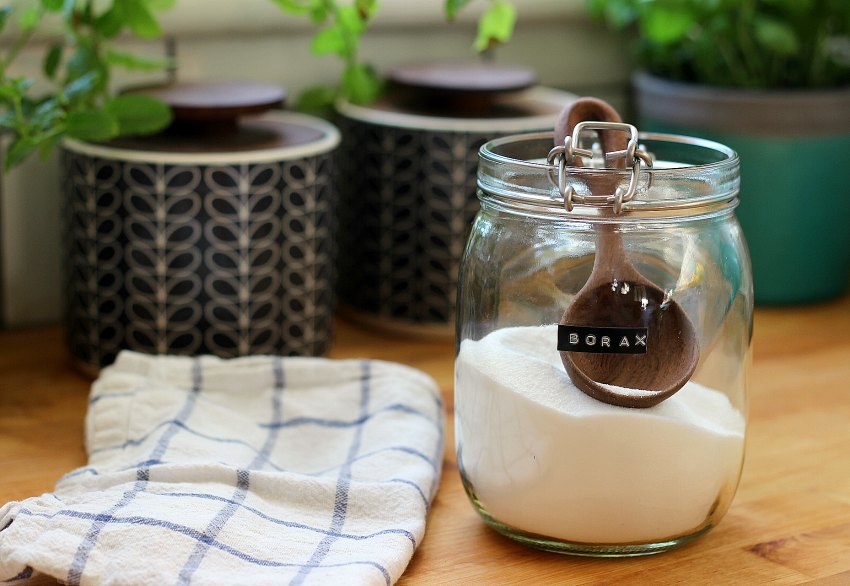Are Biodegradable Plastics Good For The Environment?
To support the running costs of Moral Fibres, this post may contain affiliate links. This means Moral Fibres may earn a small commission, at no extra cost to readers, on items purchased through these links.
Want to know if biodegradable plastics are good for the environment? Here’s all you need to know.
As consumers, the way products are marketed to us influences our decisions when it comes to deciding what product to buy. However, it’s often difficult to know if a product is actually green or if it’s just greenwashing.
Biodegradable is one term touted by manufacturers to make us feel good about our purchases. You’ll find the term on plastic bags, food wrappers, nappies, and some other plastics. Manufacturers don’t explicitly say that these products are better for the environment. However, this choice of wording implies that these are better choices for the environment.
After all, the idea is that once we’re done with a product, it will just break down into nothing is certainly an appealing one. After all, in the UK we send a massive 6.8 million tonnes of waste to landfill each year. It’s no wonder that we are drawn to alternatives that promise to disappear instead.
With 74% of UK shoppers saying the term biodegradable would encourage them to purchase a product over another non-biodegradable one, it’s important to understand if these seemingly eco-friendly alternatives really are good for the environment. Or are we just greenwashing our guilt away? Let’s unravel the complexities and separate fact from fiction:
- What Is Biodegradable Plastic?
- Is Biodegradable Plastic Good For The Environment?
- Disposing Of Plastics
- What’s The Answer
What Is Biodegradable Plastic?

First things first, we have to understand what biodegradable plastic actually is, as well as the upsides and downsides of it as a product.
Biodegradable plastics are plastics that are designed to break down into natural components such as water, carbon dioxide and biomass, over time. Once broken down they can then be absorbed into the environment, by bacteria, fungi or microbes.
The Upside
One of the main advantages of biodegradable plastics lies in their potential to reduce the persistence of plastic waste in our ecosystems. Traditional plastics can take centuries to decompose, contributing to pollution and harming wildlife. Biodegradable plastics, on the other hand, claim to break down faster, minimising the long-term impact on our planet.
The Downside
The problem is that most biodegradable plastics only degrade under certain specified conditions, such as high temperatures and microbial activity, which can be hard to replicate outside of laboratory tests.
Brands may claim their product will biodegrade in an open environment – such as in the landscape or in water. However, it has been found that the speed at which biodegradation occurs (often years) can be so slow that these biodegradable plastics do not reduce the harmful effects of littering on wildlife. It also raises concerns about whether these plastics break down as promised in landfills.
Moreover, some biodegradable plastics leave behind microplastics. These are tiny particles that can pose threats to the environment and marine life.
Are Biodegradable Plastics Good for the Environment?
Now that we’ve established what biodegradable plastics are, it’s important to work out if they are good for the environment. Firstly, let’s look at the difference between conventional plastics, biodegradable plastics and bioplastics:
Conventional Plastic
Conventional plastics are made from petroleum-based products derived from oil. They will take hundreds of years to break down. Or, in the worst case, never decompose. Some – like PET plastic bottles – are recyclable and can be made into new products easily. Other types of plastic, like synthetic clothing made from plastic isn’t so easy to recycle, so ends up in landfill
Biodegradable Plastics
Biodegradable plastics are made from conventional petroleum-based plastics but also contain chemical additives. These additives cause the plastic to break down more rapidly when exposed to air and light. However, it could take anywhere between 2-5 years to break down, if not longer, and only in very particular conditions.
In response to these challenges, researchers are exploring ways to enhance the degradation process and improve the overall efficiency of biodegradable plastics. From incorporating enzymes to developing new materials, the quest for truly sustainable alternatives is ongoing. But we’re not there yet.
Bioplastics
The other type of biodegradable plastic is known as bioplastic. Bioplastics tend to be made from plant biomass, such as corn starch, sugar cane, or wheat, and include plastics such as PLA. These types of plastics are compostable, but only in industrial composting facilities. This means they cannot be composted at home or in your kerbside collection bin.
This is because the UK favours anaerobic digestion (without oxygen) as the preferred method of food waste treatment. The government’s stance is that anaerobic digestion is better for the environment than composting, as it can produce renewable energy (in the form of biogas) in addition to recycling nutrients.
This means that most of our food waste collection and treatment infrastructure is orientated accordingly. It’s not set up to deal with compostable packaging products that require oxygen to break down.
If that isn’t enough of a headache for you, with bioplastics you also have the added headache of how the plant material that was used to create the bioplastic was grown. Concerns include the use of GM crops and the use of valuable farmland that could be used to grow food crops.
Other potential impacts of the growth of bioplastics crops include, but aren’t limited to deforestation, monocultures, use of freshwater supplies, soil erosion, fertiliser use (which often comes from petrochemical sources), pesticide use, food supplies, food prices, and food security. Makes for quite heavy reading, doesn’t it?
Disposing Of Biodegradable Plastic
As we’ve discusses, whether a product is biodegradable or not ultimately depends on where it ends up. So let’s think about that last sentence for a minute, and think about where our waste goes.
In order for biodegradation to occur three basic resources are required. These being heat, light, and oxygen. If a biodegradable plastic or bioplastic ends up in a landfill site it will probably never decompose.
In landfill sites, waste is essentially mummified, in a complete absence of light and oxygen. Food that has ended up in landfill will not biodegrade, so there is little hope for biodegradable plastics or even bioplastics.
You would think then that the answer is therefore to ensure that you always compost or recycle your biodegradable plastics. Unfortunately, it’s not that simple:
Biodegradable Plastic Disposal
Most biodegradable plastics are classed as code 7. This places them in the ‘Other’ category of plastics. Code 7 plastics are generally not accepted for recycling by local councils. The reason behind this is that biodegradable plastics are harder to recycle due to the addition of chemical additives in them.
What About Composting Biodegradable Plastics?
Unfortunately biodegradable plastics aren’t suitable for composting. Polyethylene, which is what biodegradable bags are commonly made from, often contains a manganese additive. This additive stops breaking down when placed in compost bins/heaps. Scientists think this most likely occurs due to the influence of ammonia or other gases generated by microorganisms in the compost.
Even if you were to get lucky on the composting front, and your plastics did break down then you will likely encounter another problem. Because biodegradable plastics are made from petrochemicals they aren’t always suitable for composting. This is because they can leave behind chemical residues in the lovely compost that you’ve made. The key lesson learned here is that biodegradable is not the same as compostable.
And there’s more. Some biodegradable plastics actually fragment rather than biodegrade. This is due to the addition of oxidising agents (found in so-called oxo-degradable plastics). By fragmenting, rather than degrading, they break into small pieces which can pollute soils, increase the risk of ingestion for animals and end up in our oceans and waterways. These kinds of plastics are impossible to recover for recycling and aren’t suitable for composting.
What’s The Answer?
I’m afraid to say that there is no easy answer to the plastics conundrum. That is apart from avoiding single-use plastics where you can. After all, the most sustainable option is often the one we don’t need to dispose of in the first place.
As consumers it’s important to be informed. It’s important to recognise that if a product is labelled as biodegradable then it’s often not the great environmental choice that it seems. While biodegradable plastics offer a potential solution to the persistent problem of plastic pollution, their effectiveness relies heavily on proper disposal methods and supportive infrastructure, which isn’t there yet.
This lack of infrastructure means that biodegradable plastics are rarely recyclable. And biodegradable does not mean the same thing as compostable. Whilst compostable bioplastics seem like a better choice than biodegradable ones, this is only if you have access to the appropriate composting facilities.
PS: If you enjoyed this post then you may enjoy my post on the plastics to avoid when you’re shopping. It covers things like the type of plastic, but also, perhaps lesser-known, the colour of plastic.
Found this post useful? Please consider buying me a virtual coffee to help support the site’s running costs.




